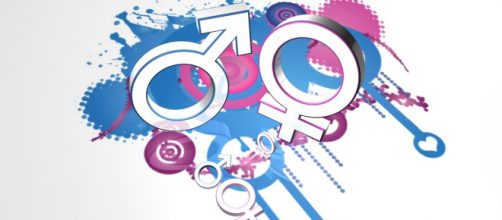Once upon a time, as many people on social media are happy to remind you at every possible interval, Biology and what's sometimes called biological sex -- in the being of the 23rd chromosome pair -- divided humanity fairly simply: XX meant girl, XY meant boy. But even at the time that this conclusion was reached, every doctor knew of babies who were born outside of the standard two sexes.
Science and medicine being what they were, these people -- known these days as Intersex people -- were dismissed as outliers, representing perhaps 1 in 1500 births.
Intersex people were known even to ancient human cultures, appearing in both Greek and Roman historical documents, among others.
Biology keeps advancing and our understanding changes
As our understanding of biology advances, intersex -- and the concept of gender versus sex -- has taken on a much wider definition. And while the latest research suggests that there is no such thing as a gender binary whatsoever, it is also beginning to come to light that even our previous theories of sexual dimorphism -- that is to say, that humans come in two models, male and female -- were woefully inaccurate.
According to the now-defunct Intersex Society of North America, when taking into account all of the ways in which one can biologically exist outside of the gender binary, that number is much closer to 1 in 30 -- with many, if not most, having no idea that they're intersex.
Statistically speaking, a number of people that you know and meet every day are intersex.
Intersex and transgender
Our definition of intersex today includes far more than the classic definition of noticeably atypical; as we know that children have identical genitalia in the womb up until about the 12th week of gestation, smaller physical variations are included to account for genitalia which never completely departed from their basic configuration. It also includes any variation in chromosomes, of which there are over a dozen possible. Further, it includes certain disorders such as antigen insensitivity and adrenal hyperplasia which can cause a person's body to develop completely differently from what their chromosomes would suggest.
Adrenal hyperplasia, in particular, occurs in some one in 66 people and can completely alter the formation of genitals, either at birth or at puberty.
And the jury is still out on whether transgender identity even has biological ties -- although the evidence is strong. But evidence that transgender identities are scientifically valid is overwhelming, adding even more "invisible" people into our sex and gender mix.
When intersex is taken into account alongside the incidence of transgender and gender-non-conforming people, the odds are that you, reading this right now, are something beyond boy or girl. And if you're not, then the person next to you is.
So think about that next time before telling someone that "it's just biology" -- because biology itself says that you're wrong.


